I toured the abandoned train stations of London's metro and was shocked at how much the city's underground transport network has grown
Abby Wallace

The abandoned walkways of Piccadilly Circus station, London.Abby Wallace/Insider.
- Underneath London, there is a network of abandoned stations that used to be part of the metro.
- The London Transport Museum offers tours of the old stations, featuring the walkways and signs.
The tour started at Piccadilly Circus station in central London. The station has seven street entrances, where commuters descend a small flight of stairs to reach the main ticket hall.
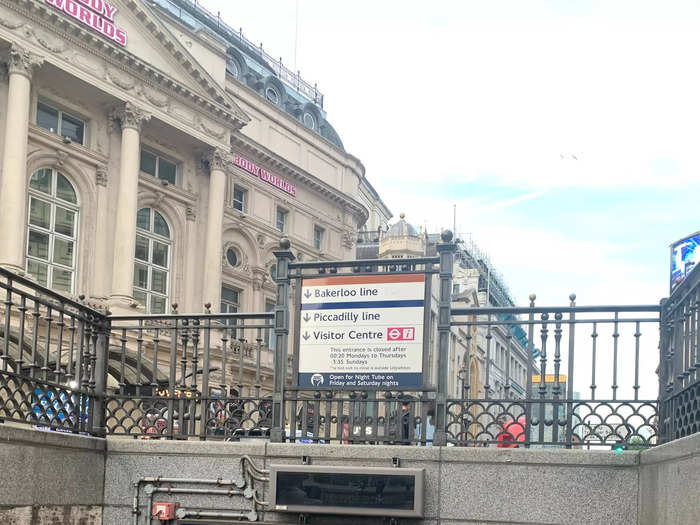
One of the entrances to Piccadilly Circus station, London. Abby Wallace/Insider.
The underground station first opened in 1906. It used to have an entrance at surface level, but now the station is entirely underground.
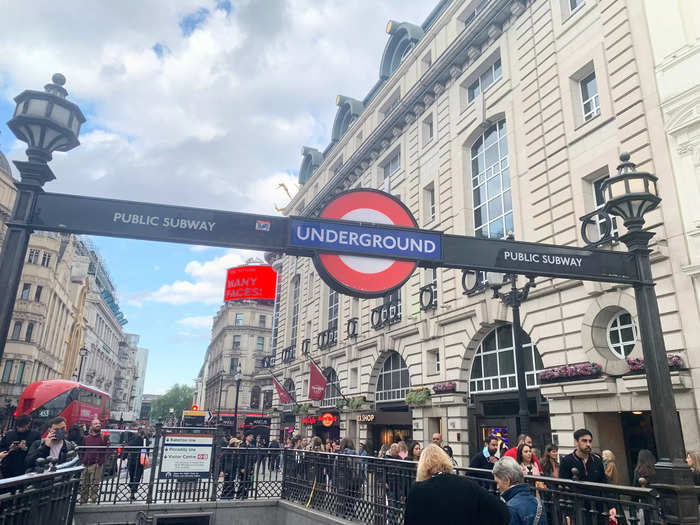
The entrance to Piccadilly Circus underground station. Abby Wallace/Insider.
Piccadilly Circus was then the largest underground station in London. It was built with 54 steel columns dotted around the ticket hall just under ground surface level ...
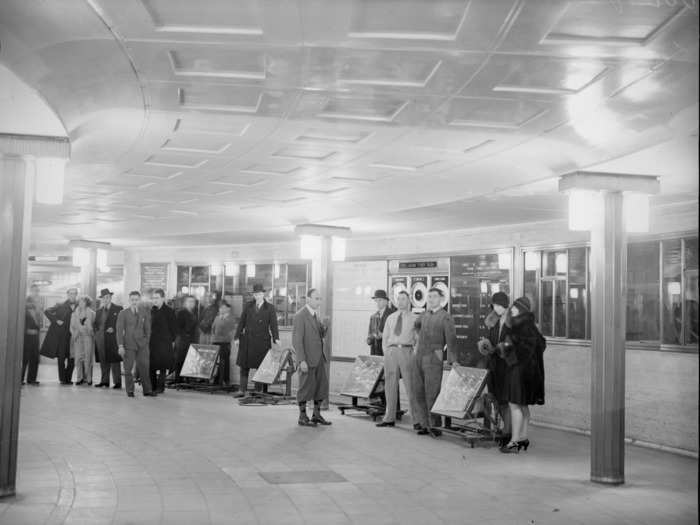
Piccadilly Circus ticket hall in 1930. Fox Photos/Getty Images.
The pillars are still a prominent part of the ticket hall today.
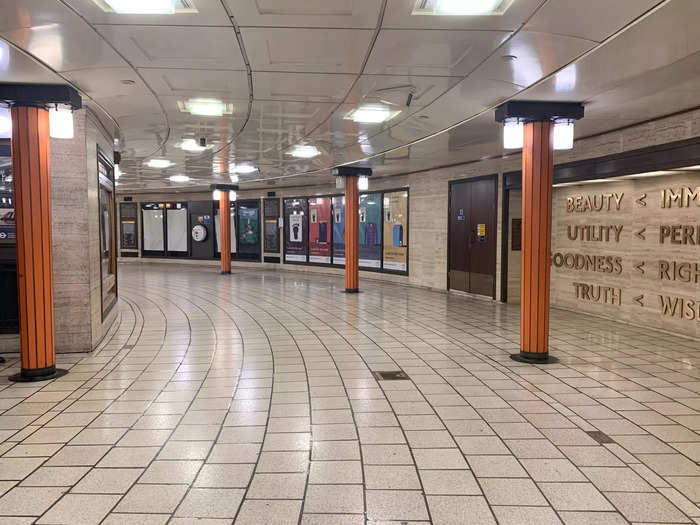
The ticket hall at Piccadilly Circus station today. Abby Wallace/Insider.
The ticket hall also features a memorial to London Transport's first chief executive, Frank Pick, who was responsible for commissioning the designs of several London underground stations, including the round logo of the metro.

A tribute to Frank Pick on the ticket hall wall at Piccadilly Circus station, London. Abby Wallace/Insider.
We descended down a former construction shaft to platform level. The original station was designed with eight lifts, four of which descend 26 meters to one of London's metro lines, the Bakerloo line.
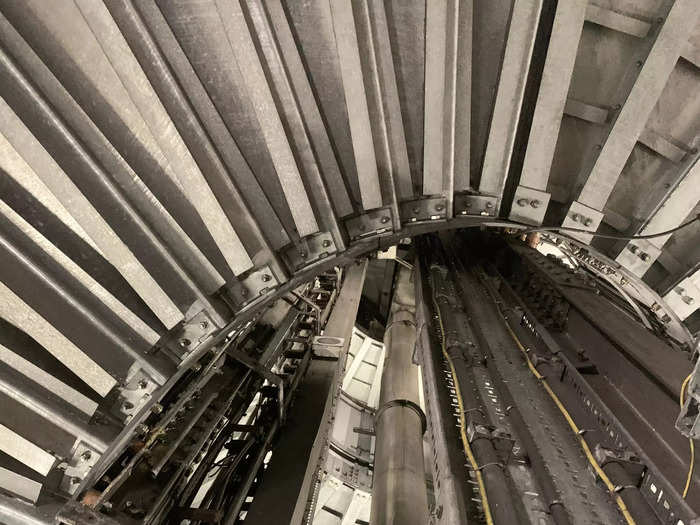
A former construction shaft at Piccadilly Circus station, London. Abby Wallace/Insider.
The platforms on London's underground metro network are mostly long and dome-shaped, mimicking the shape of the trains which roll past.
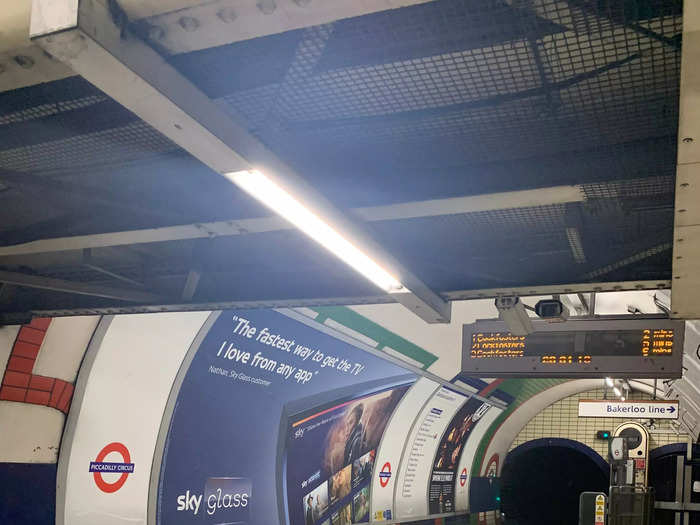
One of the platforms at Piccadilly Circus station, London. Abby Wallace/Insider.
Right at the end of the platform, there are some blue gates. I walk by these gates on my commute every day, but I've never taken much notice of them.
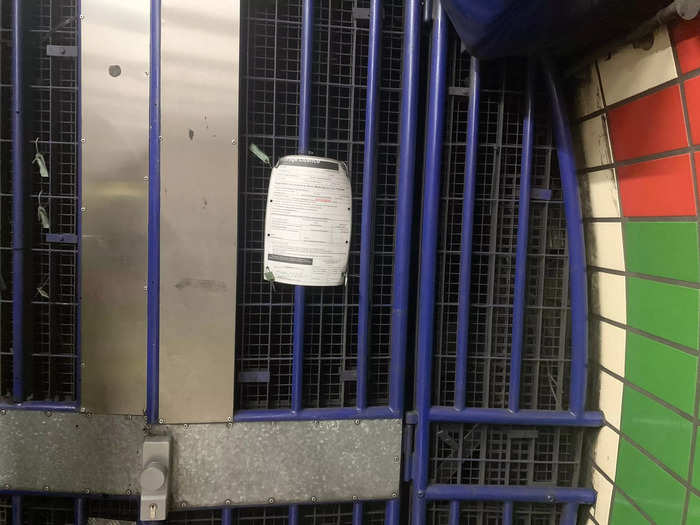
The gates on one of the platforms at Piccadilly Circus station London, leading down to the abandoned platforms. Abby Wallace/Insider.
But inside, there are steps that lead down to abandoned corridors, walkways, and lift shafts, which would have been used when Piccadilly Circus station was first built.
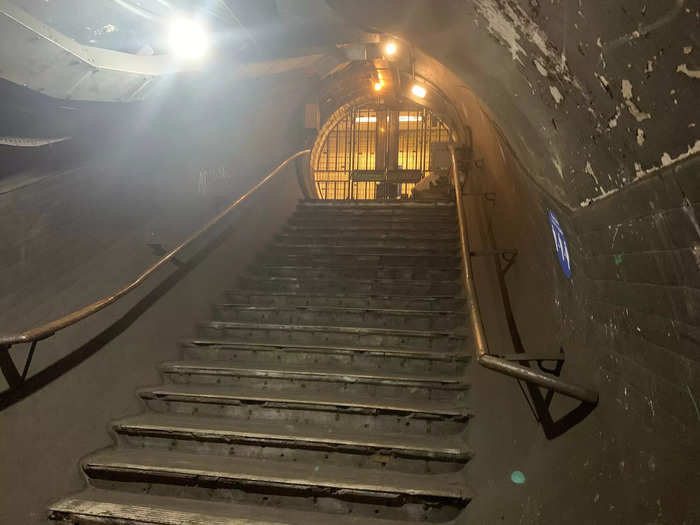
The steps leading down to the abandoned platforms at Piccadilly Circus station, London. Abby Wallace/Insider.
The passageways date back to 1906 ...
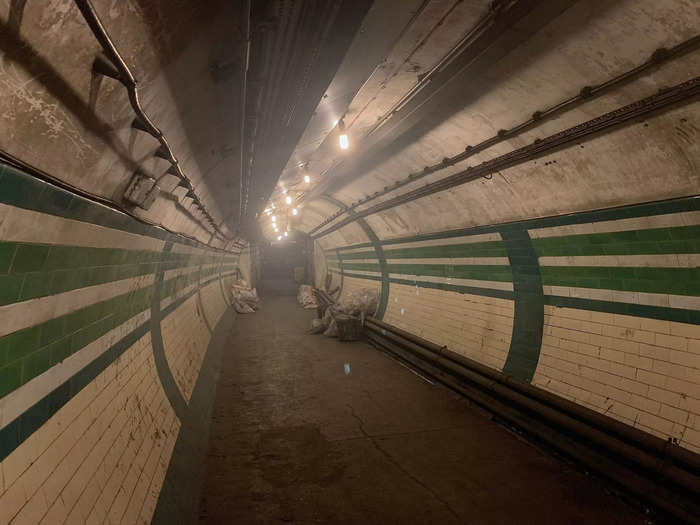
One of the original walkways between platforms at Piccadilly Circus station, London. Abby Wallace/Insider.
... and feature the original signage and tiling. Some of the original passageways have been closed to the public since 1929, according to the transport museum.
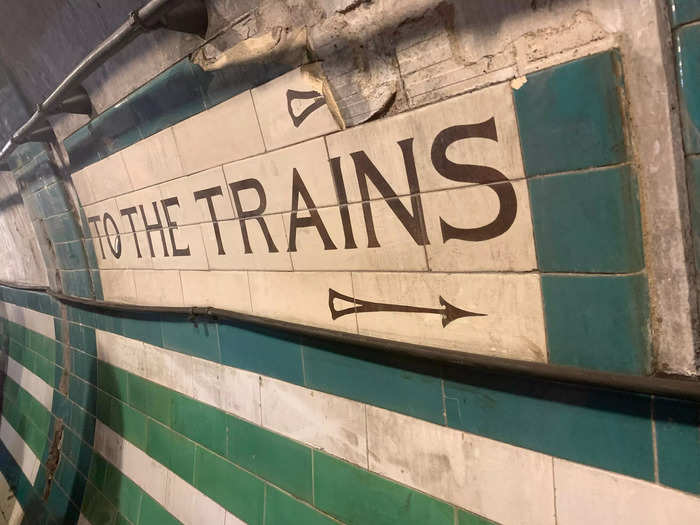
A tiled sign on one of the abandoned platforms at Piccadilly Circus, London. Abby Wallace/Insider.
The station was designed by the architect, Leslie Green, who designed more than 40 train stations across London. The authentic stamps from the tile manufacturers were still noticeable on the tiles.
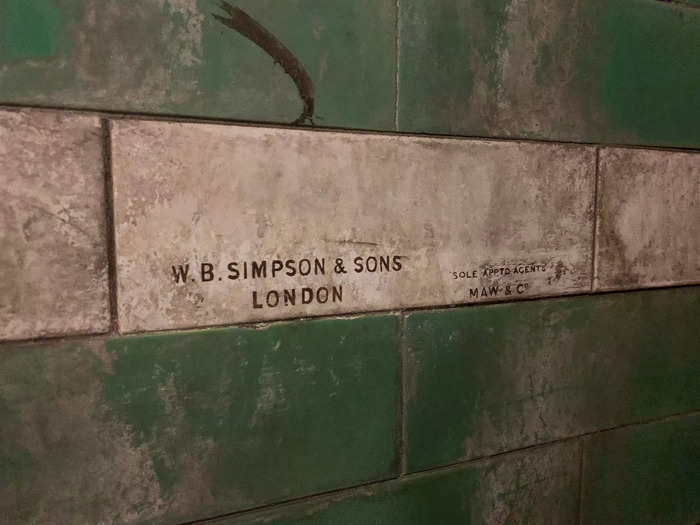
The original tiling at Piccadilly Circus station, London. Abby Wallace/Insider.
The stations were mostly designed in the same way, but featured their own colored tiling pattern. The green tiles were symbolic of Piccadilly Circus.
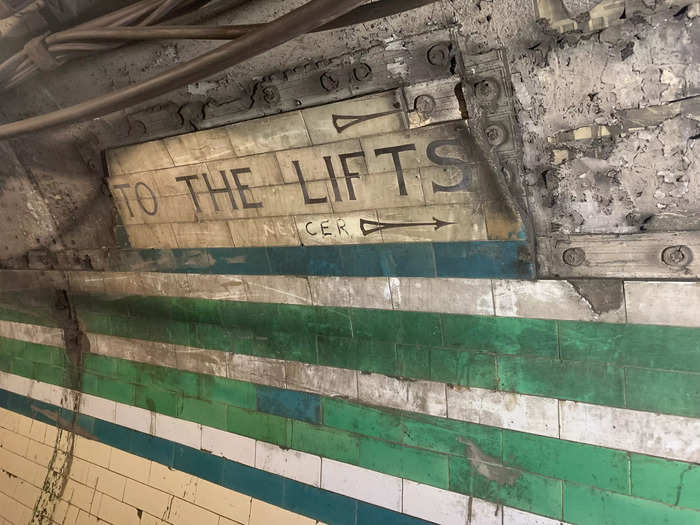
A tiled sign at one of the abandoned corridors at Piccadilly Circus station, London. Abby Wallace/Insider.
Inspiration was also drawn from the colorful mosaic tiling of the New York subway.
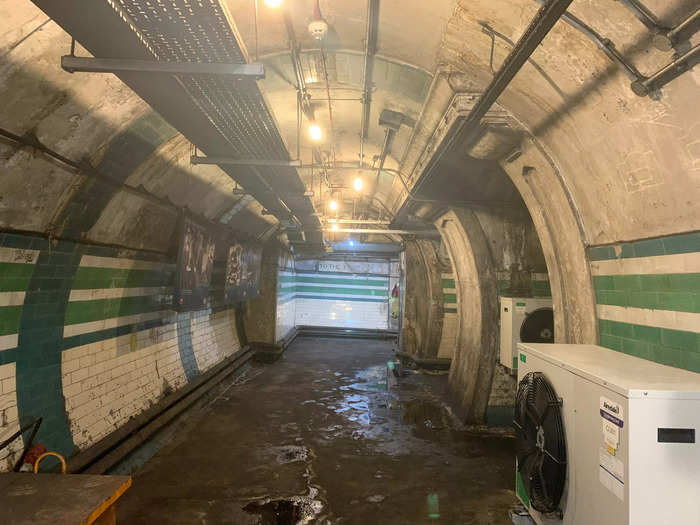
One of the original walkways between platforms at Piccadilly Circus station, London. Abby Wallace/Insider.
The abandoned passageways also led to two former lift shafts.
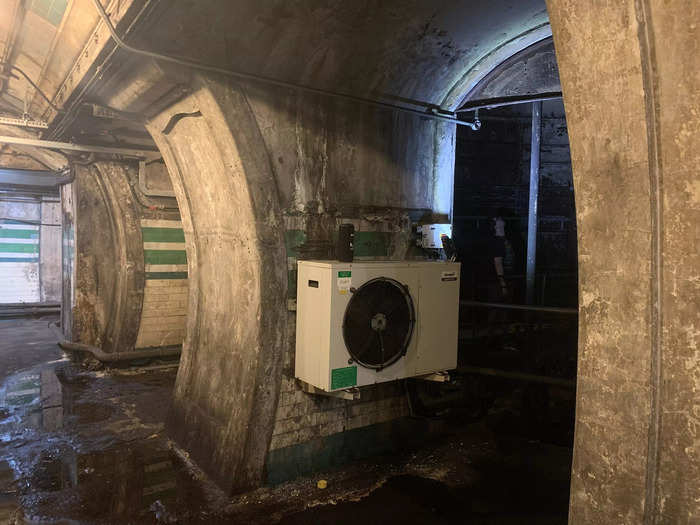
A former lift shaft at Piccadilly Circus station, London. Abby Wallace/Insider.
London's metro stations see millions of commuters every year. Piccadilly Circus sees more than 40 million passengers per year, according to the London Transport Museum.
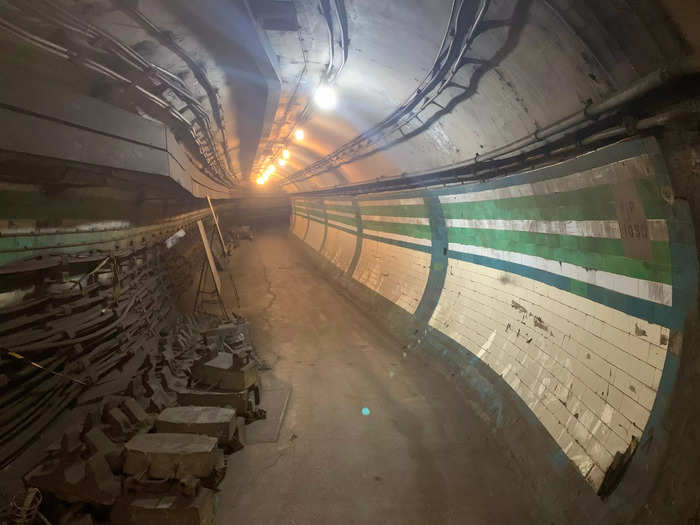
One of the former underground corridors at Piccadilly Circus station, London. Abby Wallace/Insider.
... But the station was also once a temporary shelter for Londoners. During the second world war, around 5,000-7,000 people sheltered at Piccadilly Circus every night.
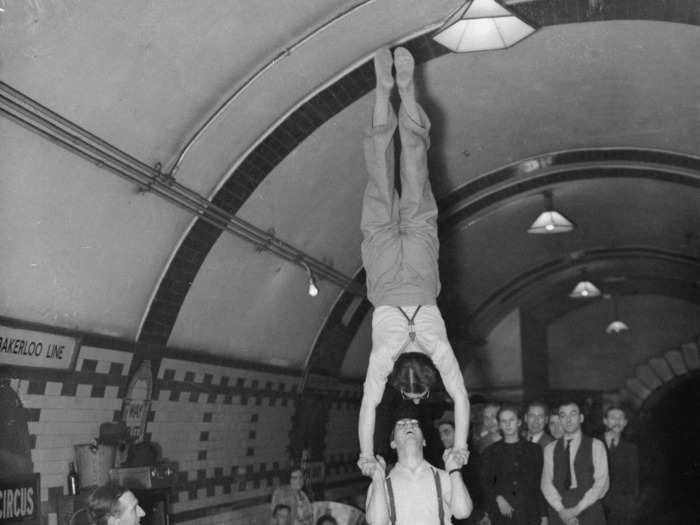
People sheltering at Piccadilly Circus station in 1940. George Dallison/Keystone/Hulton Archive/Getty Images.
In South London, you can also tour a disused deep level shelter which runs under one of London's tube lines, the Northern Line. The line runs around 58 meters below the surface, and the deep level shelter is situated between 15 and 20 meters below that.
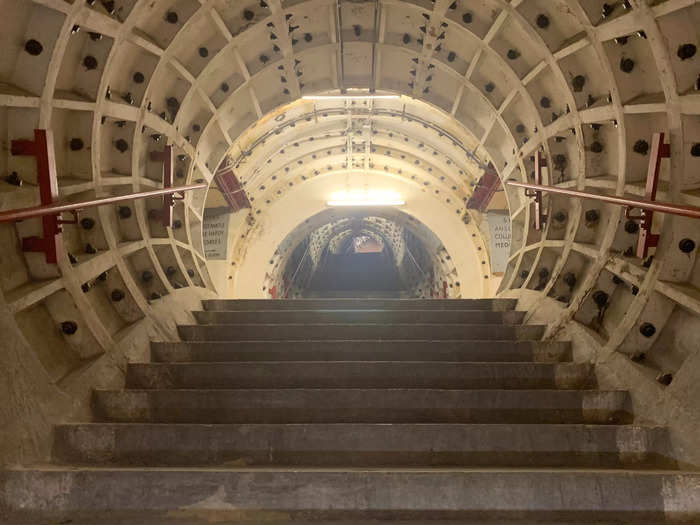
Inside the deep level shelter underneath Clapham South station, London. Abby Wallace/Insider.
Constructed by London Transport, the Clapham South shelter could accommodate around 8,000 people per night during the Second World War.
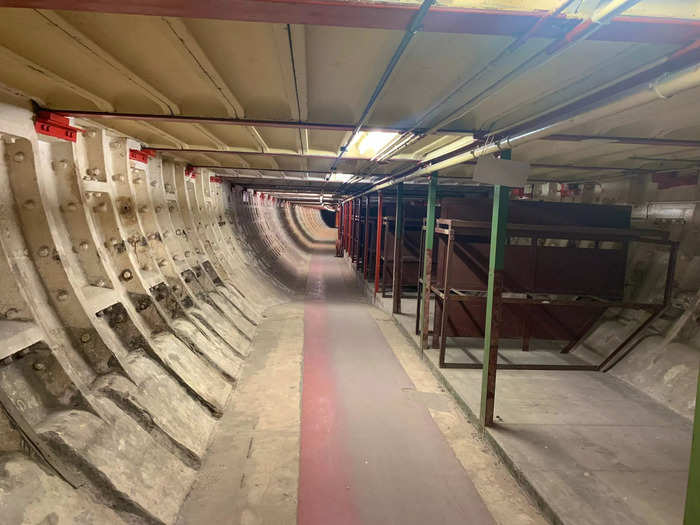
Inside the deep-level shelter underneath Clapham South station, London. Abby Wallace/Insider.
The tunnels are 16.6 feet wide and stretch for over a mile underground. The shelter was later sold to the body responsible for London's transport network, Transport for London, for £1 and leased to the transport museum for tours.
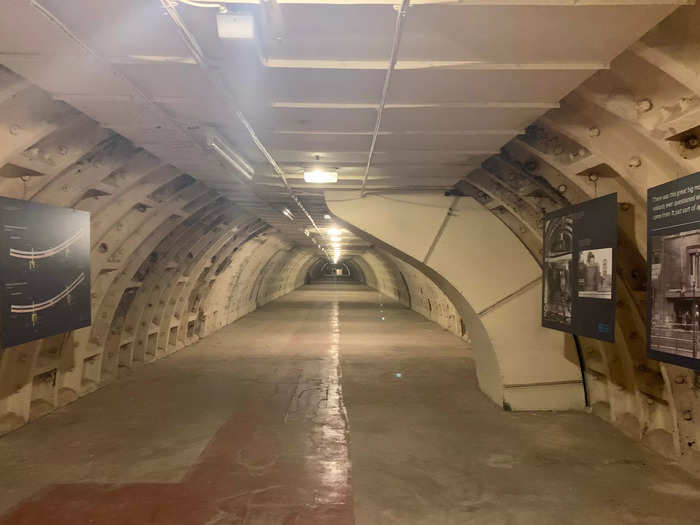
Inside the deep level shelter at Clapham South station, London. Abby Wallace/Insider.
READ MORE ARTICLES ON
Popular Right Now
Popular Keywords
Advertisement